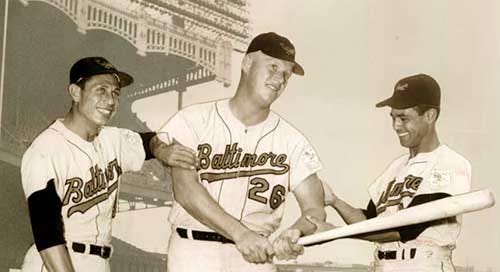Orioles in Thomasville, Georgia: "You'd work your ass off"
The famed Oriole Way originated far from Baltimore, at a minor league boot camp the club ran every spring on the grounds of a former Veterans Administration home for war vets down on their luck.
In 1952, two years before the St. Louis Browns moved to Baltimore and became the Orioles, their owner, Bill Veeck, found a site in Thomasville, Georgia, where the franchise’s minor league teams could spend the spring preparing for the season.
It was the heyday of the minors, when a major league club might have relationships with a dozen minor league affiliates ranging from Triple A to Class D. In Thomasville, at an old Veterans Administration home for war veterans, Veeck found a campus in the piney woods with enough playing fields for that many teams and enough military-style barracks to house several hundred players.
When the Browns moved to Baltimore, the only employee who came east with the team was the farm director, Jim McLaughlin. He liked the Thomasville arrangement and asked to keep it. Baltimore’s ownership gave it the thumbs up.
Every spring from the franchise’s first year in Baltimore through the 1966 season, several hundred Oriole farmhands gathered in Thomasville for eight weeks of training and instruction. Paul Richards, the Orioles’ manager and GM from 1955-61, wanted the same fundamentals taught on every field so players wouldn’t have to adjust to new signs or theories as they moved up and down the system.
Same pickoff plays.
Same cutoff-throw fundamentals.
Same everything.
Thus was born “the Oriole Way,” which became official when coaches at the camp put what they were teaching down on paper.
Earl Weaver, who coached at Thomasville for nearly a decade and served as camp director for two years, recalled: “The Dodgers had their way. The Cardinals had their way. Now we were going to have our way. It was a good idea and we stuck to it.”
Generations of young Orioles spent every spring in Thomasville, and for many, it was an unforgettable experience. I devoted an entire chapter to it in From 33rd Street to Camden Yards, my oral history of the Orioles. Players slept in barracks or in small double rooms. A mess-hall kitchen provided all meals. Boog Powell recalled:
“When I got there in 1959, they gave me uniform number 570 or something like that. Thomasville was something else. It was like a regular army barracks — whenever someone would fart in the middle of the night, you’d laugh and throw pillows at them. There’d be reveille at daybreak, and you’d get up and eat breakfast, put your stuff on and run to the field, which was about a mile away on a dirt road. Then you’d work your ass off until noon and run back to the barracks. Then you’d have lunch for an hour and run back to the fields for an afternoon session.”
The players didn’t have much to do other than eat, sleep and think baseball.
“Tallahassee was 45 minutes away. There were two pingpong tables. If you lost, you had to wait two hours before you played again. I don’t even think they had a TV. It was the perfect environment to focus on the game.” Jim Palmer said in his yet-to-be-posted Bird Tapes interview.
The coaches met in the evenings to discuss and analyze players, who belonged at which levels, who should get promoted or cut, etc. There was a campus lounge called the Bird’s Nest where the coaches shared a beer or two into the late evenings.
Thomasville was an integral part of the Oriole experience until the franchise moved the camp to Fernandina Beach, Florida, in 1967.
Many thanks to Bird Tapes subscriber James Bigwood for unearthing a classic 1962 video on the Orioles’ preparations for the season, Narrated by Chuck Thompson. the 26-minute video is truly a throwback to a different time in baseball. The first half gives you a flavor of the Thomasville experience.
Here’s a link to the video, which I wholeheartedly recommend: Orioles/Thomasville







You are most welcome, John—and thanks for the shout-out! I’m really glad you like the video. I’ve come across a couple more, which I will send your way. It is such a joy to follow you on this project, as you relive your interviews and frame them with additional context. All of us in Birdland are forever indebted to you for preserving this wonderful history.